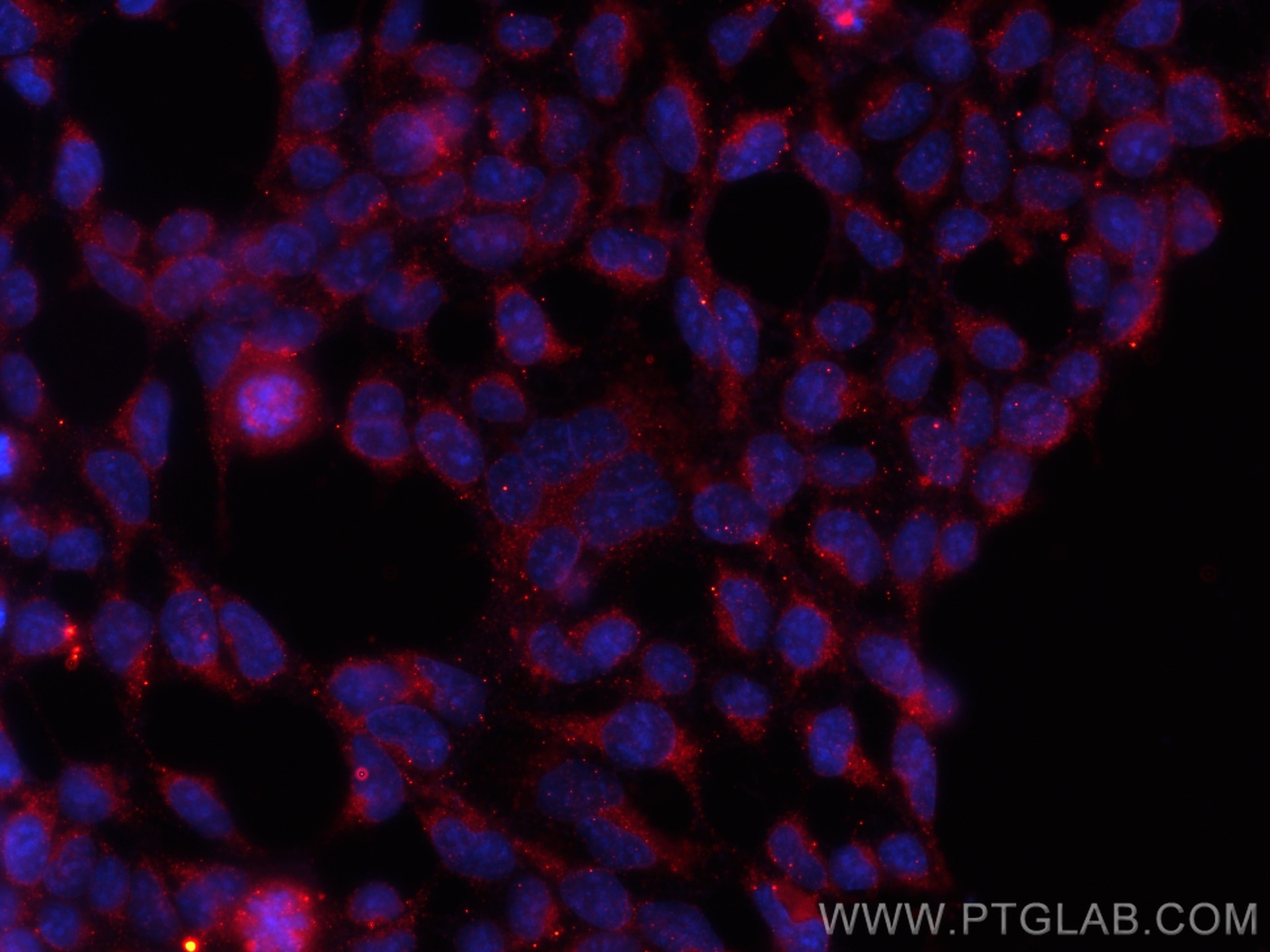Tested Applications
| Positive IF/ICC detected in | HEK-293 cells |
Recommended dilution
| Application | Dilution |
|---|---|
| Immunofluorescence (IF)/ICC | IF/ICC : 1:50-1:500 |
| It is recommended that this reagent should be titrated in each testing system to obtain optimal results. | |
| Sample-dependent, Check data in validation data gallery. | |
Product Information
CL594-67763 targets GPX4 in IF/ICC applications and shows reactivity with Human, mouse, rat, rabbit, pig samples.
| Tested Reactivity | Human, mouse, rat, rabbit, pig |
| Host / Isotype | Mouse / IgG2b |
| Class | Monoclonal |
| Type | Antibody |
| Immunogen |
CatNo: Ag30650 Product name: Recombinant human GPX4 protein Source: e coli.-derived, PET28a Tag: 6*His Domain: 107-197 aa of BC021567 Sequence: KQEPGSNEEIKEFAAGYNVKFDMFSKICVNGDDAHPLWKWMKIQPKGKGILGNAIKWNFTKFLIDKNGCVVKRYGPMEEPLVIEKDLPHYF Predict reactive species |
| Full Name | glutathione peroxidase 4 (phospholipid hydroperoxidase) |
| Observed Molecular Weight | 20-23 kDa |
| GenBank Accession Number | BC021567 |
| Gene Symbol | GPX4 |
| Gene ID (NCBI) | 2879 |
| RRID | AB_2920180 |
| Conjugate | CoraLite®594 Fluorescent Dye |
| Excitation/Emission Maxima Wavelengths | 588 nm / 604 nm |
| Form | Liquid |
| Purification Method | Protein A purification |
| UNIPROT ID | P36969 |
| Storage Buffer | PBS with 50% glycerol, 0.05% Proclin300, 0.5% BSA, pH 7.3. |
| Storage Conditions | Store at -20°C. Avoid exposure to light. Stable for one year after shipment. Aliquoting is unnecessary for -20oC storage. |
Background Information
GPX4 (Phospholipid hydroperoxide glutathione peroxidase, mitochondrial) protects cells against membrane lipid peroxidation and cell death. Required for normal sperm development and male fertility.It has two isforms about 20KDa and 22KDa, respectively. GPX4 is a monomer,but it has a tendency to form higher mass oligomers (PMID:17630701). It presents primarily in testis.
Protocols
| Product Specific Protocols | |
|---|---|
| IF protocol for CL594 GPX4 antibody CL594-67763 | Download protocol |
| Standard Protocols | |
|---|---|
| Click here to view our Standard Protocols |




